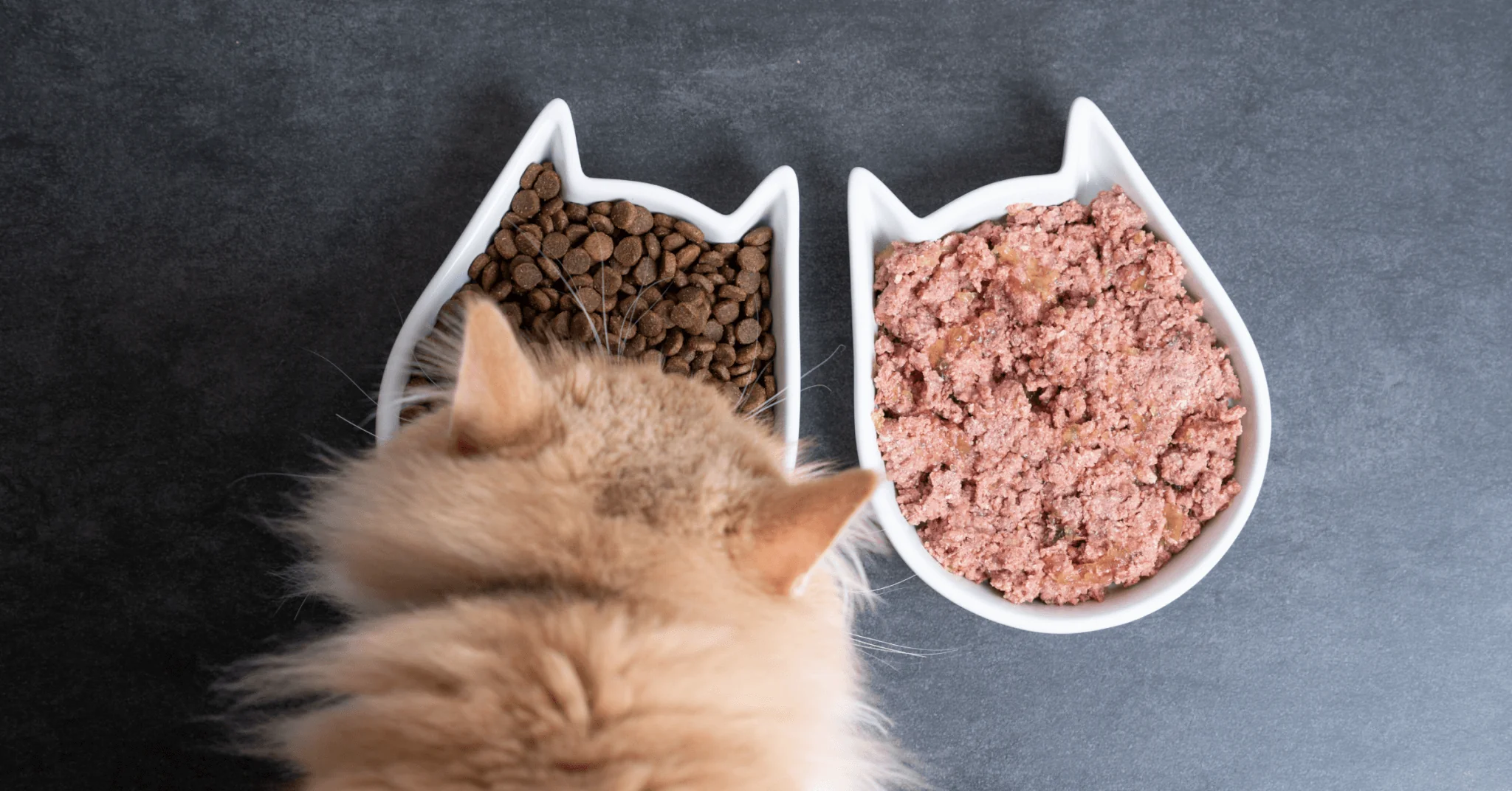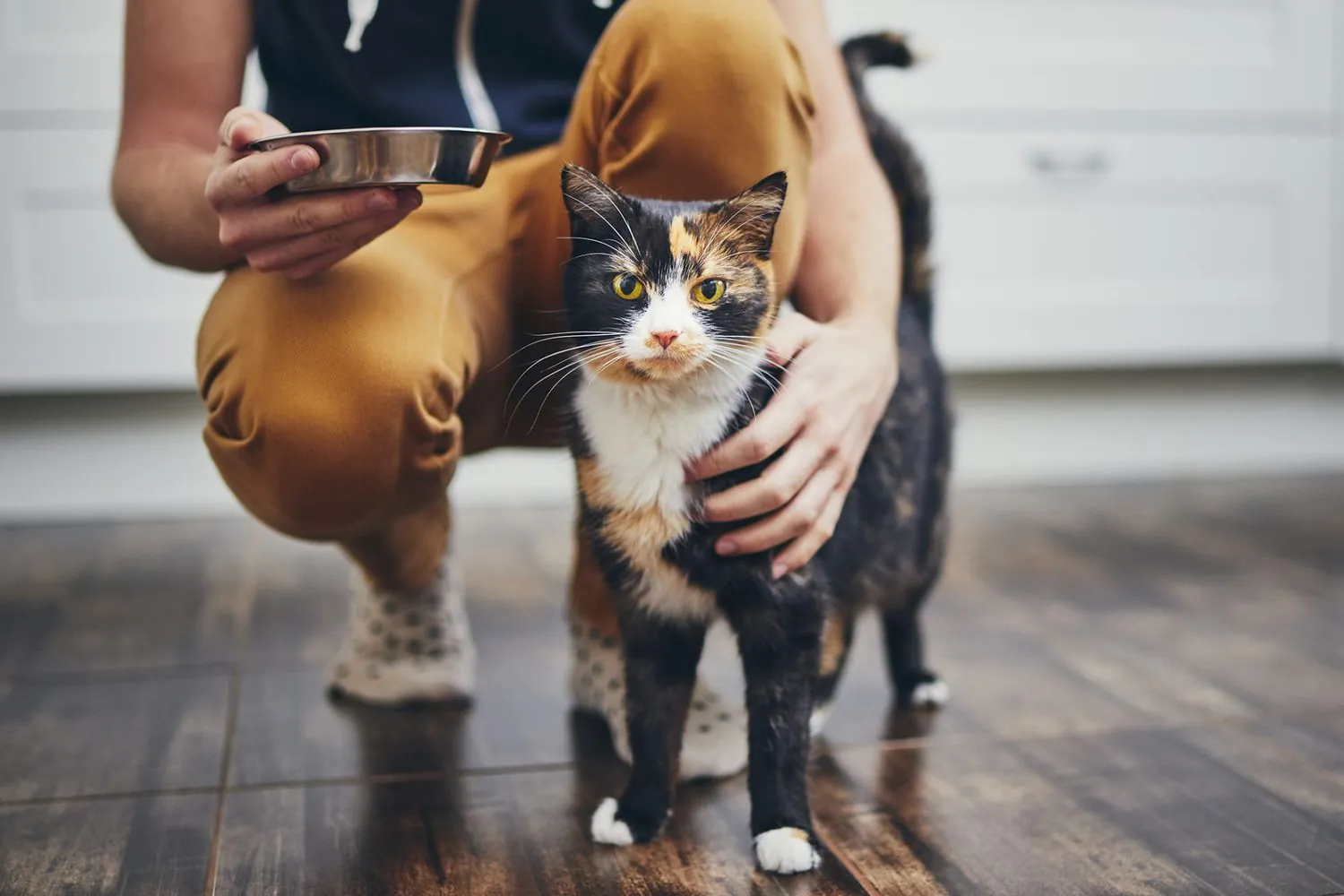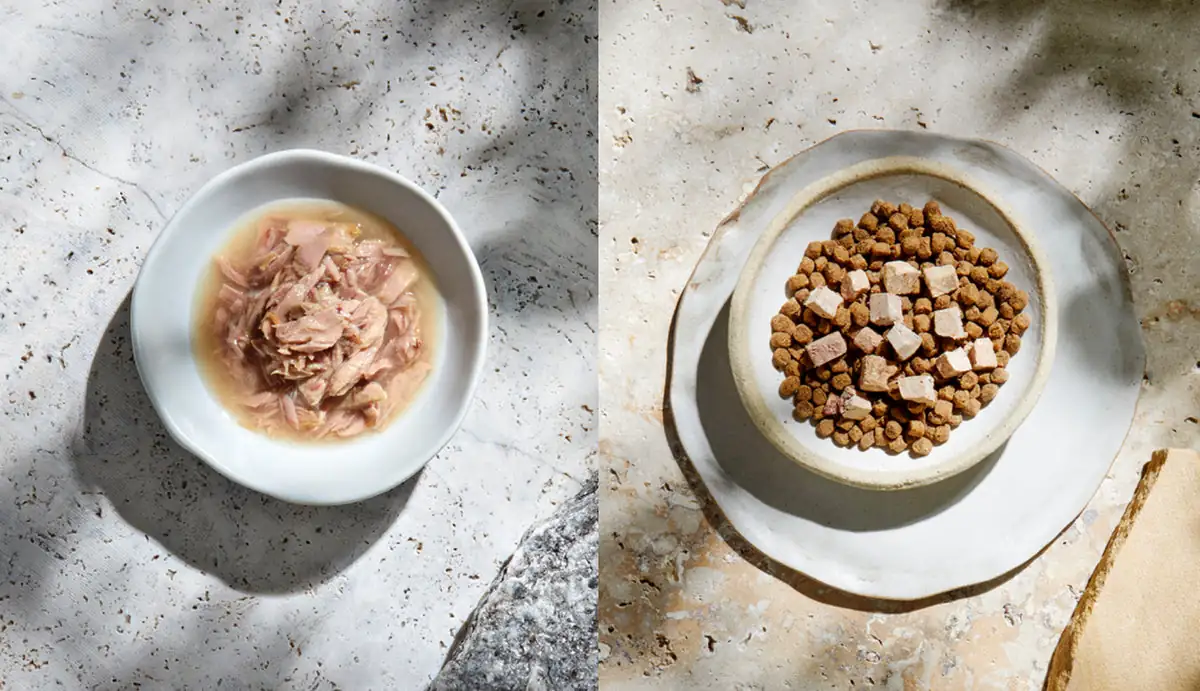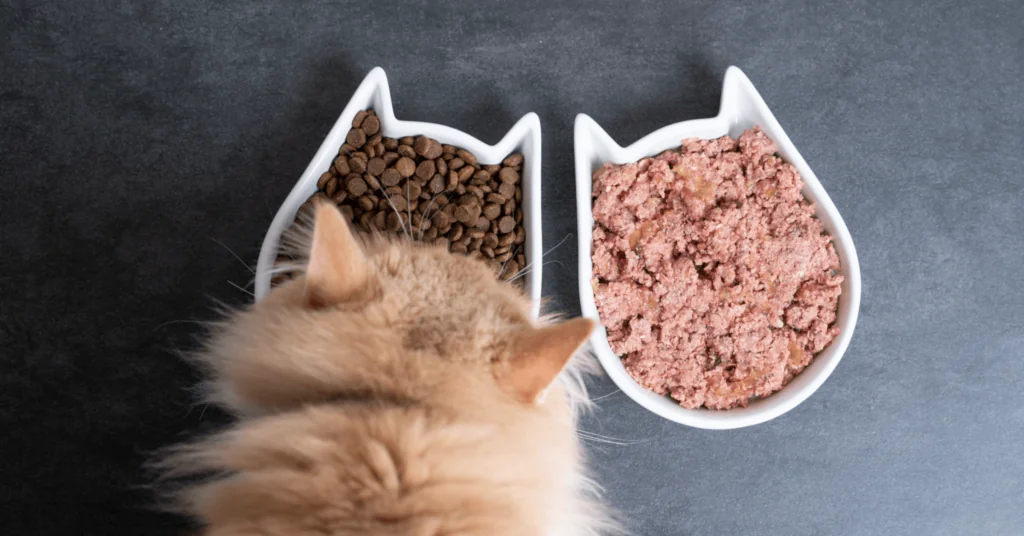No products in the cart.
Blog
Is Dry or Wet Food Better for Cats?
Alright, fellow cat lovers! If you’re like me, you’ve probably spent countless hours pondering the age-old question: Is dry or wet food better for our feline friends? There’s a lot of debate around this topic, and you’ve likely encountered strong opinions on both sides. So, let’s unpack the pros and cons of both dry and wet cat food and maybe help you decide what’s best for your whiskered buddy.
>>>Read more: Avoid These 5 Foods That Can Poison Your Cat

The Basics: What’s the Difference?
Before we jump into the nitty-gritty, let’s quickly outline the key differences between dry and wet cat food.
- Dry Cat Food (Kibble): Typically contains about 10% to 12% moisture and is crunchy. It’s convenient, usually more affordable, and has a longer shelf life once opened.
- Wet Cat Food (Canned): Contains about 75% to 80% moisture, making it more hydrating for your cat. It’s often more palatable and tends to have a richer aroma, which many cats find irresistible.
Now that we have that down, let’s take a closer look at the benefits and drawbacks of each type!
The Case for Dry Cat Food
- Convenience: Dry food is easy to measure out and store. You can leave it out for your cat to graze throughout the day without worrying about it spoiling. Plus, if you’re traveling or need to leave your cat alone for a weekend, dry food is generally less complicated.
- Cost-Effective: Generally speaking, dry kibble is less expensive than wet food. If you’re on a budget, it can be a more economical option, especially if you have multiple cats.
- Teeth Cleaning: The crunchy texture can help reduce plaque build-up on your cat’s teeth, giving their dental hygiene a little boost (though it’s not a substitute for regular dental care).
- Portion Control: Kibble allows you to easily measure out portions. Once you find the right amount your cat needs based on their age, weight, and activity level, it can help manage their diet, which is especially important if they are prone to obesity.
The Case for Wet Cat Food
- Hydration Hero: Wet food is packed with moisture, which is fantastic for keeping your cat hydrated. Cats can be notoriously bad drinkers, so wet food can help ensure they get enough fluids—especially important for maintaining healthy kidney function.
- Palatable Delight: Many cats find wet food more appealing, thanks to its rich aroma and variety of textures. If your cat is a picky eater, wet food could be the way to go. A lot of cats find canned food more tempting than dry.
- Weight Management: Wet food is usually lower in calories compared to dry food. This can potentially help when trying to manage your cat’s weight, as they can eat a larger volume of food while still consuming fewer calories.
- Easier for Seniors: Older cats or those with dental issues may find it easier to consume wet food. The softer texture can make eating less painful and more enjoyable.
Some Caveats to Consider
Now, before you rush out to stock up on your chosen food type, let’s take a moment to consider some downsides.

Dry Food:
- Lack of Moisture: Cats are evolved from desert-dwelling scavengers, so they really don’t feel the need to drink water as much as we would think. They get moisture from their prey. Feeding them only dry food can contribute to urinary issues or even kidney problems if they don’t drink enough water.
- Potential for Overeating: Cats can be grazers with dry food, which might lead to mindless munching and resultant weight gain. Keep an eye on portion sizes!
Wet Food:
- Cost Consideration: Wet food typically costs more than dry food, and if you have multiple cats, those costs can add up quickly.
- Spoilage Risk: If you leave wet food out for too long, it can spoil. It’s usually best to serve it in one sitting to avoid leaving leftovers lying around.
- Dental Health: While wet food is great for hydration and palatability, it doesn’t aid in dental care. Regular veterinary check-ups and dental treatments will still be necessary.

Conclusion: The Best of Both Worlds?
So, what’s the final verdict? The best approach often involves a combination of both dry and wet food tailored to your cat’s specific needs. This combo allows your feline to enjoy the benefits of hydration from wet food while reaping the convenience and dental benefits of dry food.
Here are a few tips to consider when deciding:
- Age and Health: Consult with your vet to determine what’s best for your cat based on their life stage and health conditions. For instance, a kitten or a senior cat may have different dietary needs.
- Flavor Variety: Cats can get bored with the same flavor. Mixing it up can enhance their eating experience. Plus, it can help you learn what your cat really loves.
- Establish Hydration: Make sure there’s always fresh water available, especially if your cat’s main diet is dry food.
- Monitor Their Weight: Keep an eye on your cat’s weight and overall health. Adjust portion sizes and food types as needed to ensure they are thriving.
At the end of the day, whether you choose dry, wet, or a mix of both, the most important thing is that your kitty is happy, healthy, and well-fed. So, do some experimenting, maybe try out a few different combinations, and see what your furry friend enjoys the most. After all, nothing beats the joy of watching your cat devour a meal with gusto!
Happy feeding, and may your cat always have a full bowl!
>>>Buy now: Adopt Forbidden Cats Hoodie


